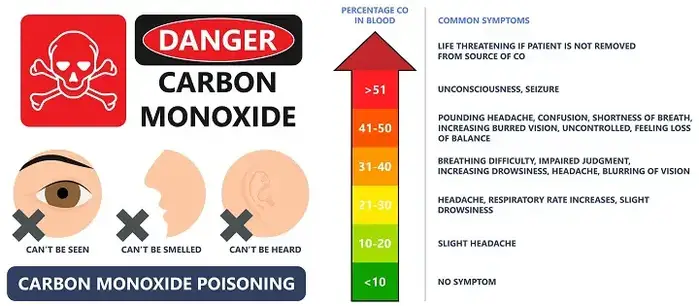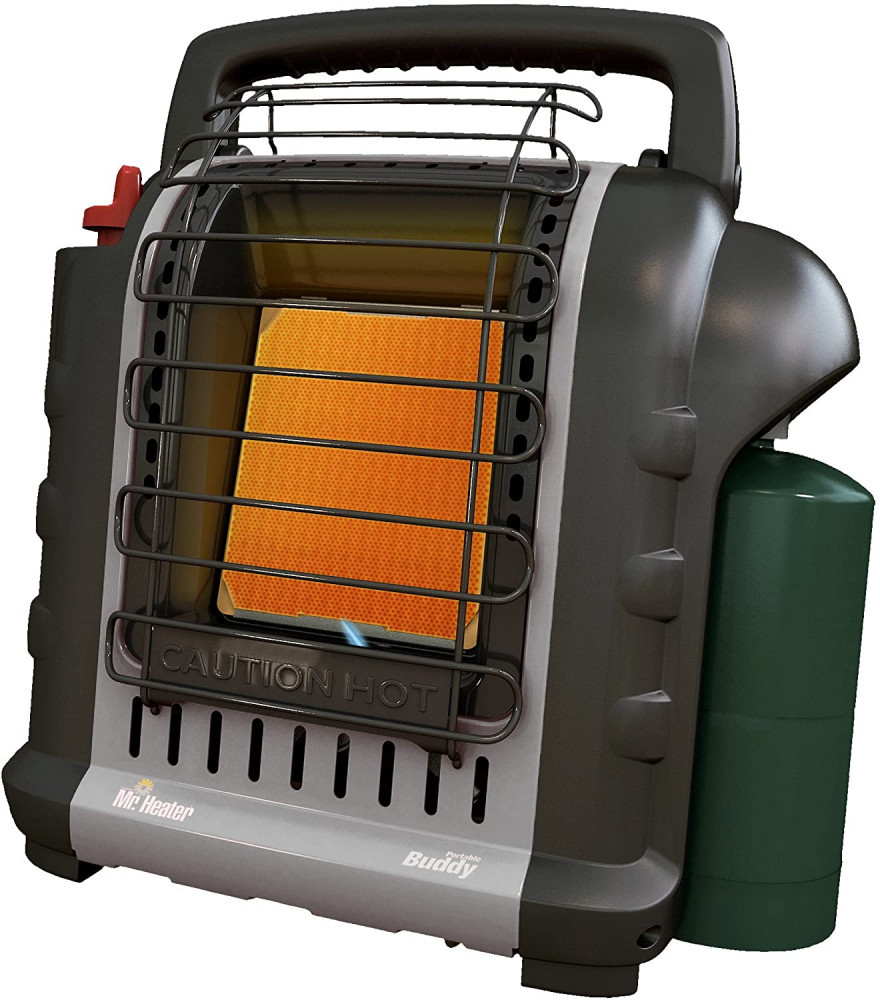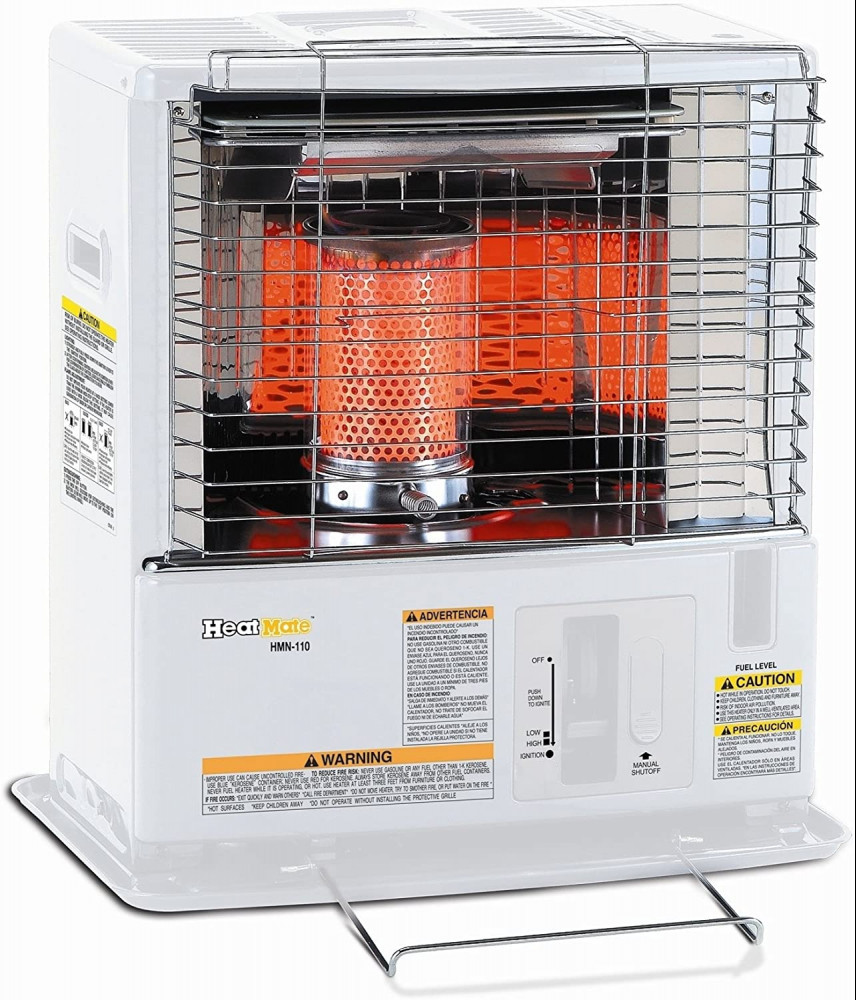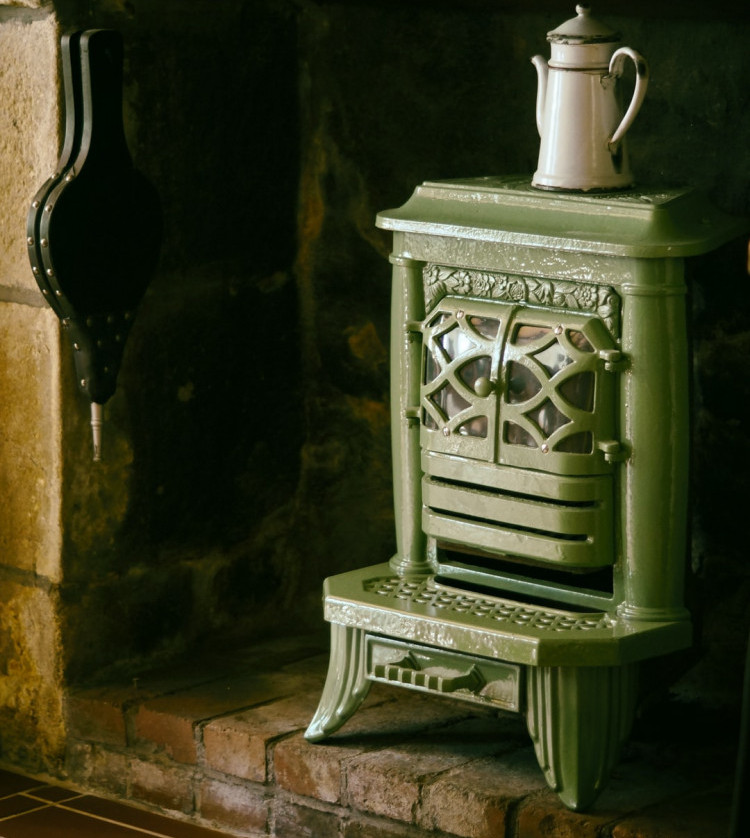3 Of The Safest Ways to Heat Your Home in an Emergency
February of 2021 caught the nation by surprise, with a nationwide freeze that hit all but Florida. Texas, which is known for hot weather, was hit particularly hard, with 210 people dying due to the freeze and almost losing their electric grid entirely. The fact that it happened once tells us that it can happen again, especially when we consider that nothing has really changed since then.
It is widely recognized in the prepping and survival community that the ability to heat our homes is a very high priority, as it is necessary for retaining our core body heat. Yet Winter Storm Uri has proven to all of us that we can’t depend on our infrastructure to ensure that we can keep our homes warm. If we’re going to keep our homes and families warm, we need something besides our home’s HVAC system to ensure that we can do it.
An Important Word about Safety
One of the most challenging things about heating our homes is doing so safely. Most of the ways in which we produce heat without electricity involve fire in some way or another. While fire can easily spread, if we are using some sort of device manufactured for burning that fire in, it should be made in such a way as to contain the fire. Just as long as we don’t allow the fire to get too big or allow flammable materials too close to it, we should be able to contain the fire without much problem.
Keep in mind that this might require rearranging your home somewhat, so as to allow sufficient space between your heater and your furniture. No furniture should be within three feet of any fire. That may not seem like a lot, but in a crowded room, it can be difficult to accomplish. In addition, a wood-burning stove must be three feet from the wall, so they really take up a lot of space.
While having the fire spread is a big risk, it’s nowhere near as big a risk as to the carbon monoxide the fire produces. Most people who die in a home fire die from carbon monoxide poisoning, not from burning to death. Carbon monoxide is dangerous because it takes the place of oxygen in the bloodstream, depriving the body’s organs of the oxygen they need to survive. As carbon monoxide has no odor, taste, or color, it is all but impossible for us to detect without a carbon monoxide detector in place.
As an Amazon Associate, I make a small commission from purchases made on this site. It cost you no more and helps me continue to help others be ready before they have to be!
Since any burning produces carbon monoxide, any method that produces heat by burning requires adequate ventilation. A gas hot water heater, for example, requires ventilation to the outdoors so the carbon monoxide can be removed from the home. The same is true for a gas furnace. Fireplaces and wood-burning stoves are naturally vented via the chimney attached to them.
The problem comes when people do things like bringing their barbecue grille indoors and trying to use them for heating. With the doors and windows closed, there is no way for the carbon monoxide to escape. At the same time, there is no means of replenishing the oxygen supply that is consumed during the process of burning.
For those types of heat sources to be used safely, proper ventilation is required. But since they do not have any readily available means of attaching that ventilation, most people ignore doing so, to their own demise.
Theoretically, it would be possible to use any such burning device for indoor heat, if it were properly ventilated, both for the outgoing carbon monoxide and bringing in fresh oxygen. Even then, it would be absolutely necessary to have a working carbon monoxide detector in the room just to make sure that things remain safe.

1. Fireplaces and Wood-Burning Stoves
The most common alternative heating method people use is a fireplace or wood-burning stove. Of the two, the wood-burning stove is considerably more efficient, as it is able to radiate heat from all sides, whereas a fireplace can only radiate heat from the front. That’s why the Franklin Stove was such a hit and wood-burning stoves gradually took over from fireplaces as the primary means of heating a home.
Want to prep but not sure where to begin?
Click Here To Start Your Survival Plan!
Installing a wood-burning stove requires first making a place that is safe for the installation. The idea is to create a fireproof area so if any sparks escape the stove, they are unlikely to land on a flammable surface. There are regulations in the building code that apply to the size and material composition of this area.
For the most part, both fireplaces and wood-burning stoves need to be vented through the roof, although it is possible to vent a wood-burning stove through the wall, especially if it uses pellets rather than logs. The problem with venting through the wall is that you can end up with backflow issues, where the wind ends up pushing the exhaust back into the room. There’s a great article that gives clear guidelines on how to do this.
One of the things that most people don’t realize when looking at a wood-burning stove or fireplace is just how much wood they will go through. People who heat with wood generally go through four to six cords of firewood per winter; and that’s good hardwood, not pine. While it can be useful to have some pine in the woodpile, specifically for starting fires, that’s not adequate for heating.
Even though wood-burning stoves that use pellets can be more easily vented through the wall, they are not recommended for survival heating as they require commercially-produced wood pellets. Once the supply of those is gone, the stove is useless.
2. Catalytic Heaters
Catalytic propane heaters are a good option for short-term emergency heating, especially in a case where propane is already being used in the home. Unlike a furnace that is burning propane, a catalytic heater doesn’t require electricity for the controls or to blow the warmed air through the home. This limits the amount of area that one heater can provide heat for.
These heaters don’t burn the propane as a propane barbecue grill would. Rather, they are flameless heaters that rely on a chemical reaction to break down the propane molecules, thereby producing heat. Because of this, they produce no carbon monoxide, making them safe for use indoors, even without ventilation. They can also be used in recreational vehicles and even tents. For more details on how catalytic heaters work, check out this article.
The one problem with catalytic heaters is fuel. The heaters themselves are very efficient, with an average heater only using about 1/15 lb. per hour. This means that a typical 500 lb. home tank will power one catalytic heater for over 40,000 hours. That’s something like five years. But once the fuel is gone, it’s gone, and there probably won’t be any resupply.
3. Kerosene Heaters 
Another fuel to consider is kerosene; at least in parts of the country where kerosene heating is commonplace. Kerosene heaters are usually portable units that burn very efficiently, producing very low levels of pollutants, including carbon monoxide. So, while they do still need ventilation, it’s not as big an issue as burning wood is.
The big issue here is fuel. Kerosene is a petroleum product. Heaters running off it usually have a two-gallon tank and can run off that two gallons for four to five hours at their maximum setting. However, those heaters will produce 10,000 to 30,000 BTU of heat at that setting.
While making kerosene is difficult and requires special equipment, a kerosene heater can be run off of bio-diesel, which can be produced at home. So, that kerosene heater can be used as a long-term heat provider if you make a setup for creating bio-diesel. There are a number of videos and instructional articles about making biodiesel around, including this one from Popular Mechanics.
Getting the Most Out of Your Heat
What you’re using as a heat source isn’t the only issue. How you use that heat is just as important. None of the methods I’ve mentioned above will heat an entire home. Back in the day when people typically heated their entire home with wood, most people did so by having one-room homes with a loft for the children to sleep in. Every time you add another room to the house, you have to either add another heat source or add a means to move heat from the main room to that other room, such as our modern forced-air heating systems.
Two of the heating methods I’ve mentioned can actually work rather well for this; catalytic propane heaters and kerosene heaters. Catalytic heaters are available in models which are small enough and efficient enough that you could put one in every room. All that would be required is piping the propane into all those rooms. While that might be expensive, it’s a one-time expense. Kerosene heaters are portable, so they could be moved from room to room, as needed.
But by and large, heating your home with these alternate heating methods, especially in an emergency situation, is going to require some lifestyle modifications. But since we’re talking about temporary heat for an emergency, they are only temporary modifications.
Warm Rooms
The first thing is to establish what’s known as a warm room and basically keep the family there most of the time. This is usually the living room or family room, whichever has the heat source installed in it. Whatever wood-burning stove or fireplace that room has in it should be purchased to be large enough to heat that entire room, even if the home has a great room. But don’t bother trying to buy one large enough to heat the entire home as the heat won’t naturally move to those other rooms.
Once the warm room has been established, block it off from the rest of the home. If the house is being built, this could include insulating the walls between that room and the rest of the house; but in most cases, it only means blocking off doorways either by installing doors or hanging extra blankets over the doorway.
While an imperfect solution, this will trap most of the heat in that room. Anyone going into other parts of the house will need to accept that they are going into unheated areas and dress accordingly.
Soapstones
There are actually a couple of great ways our predecessors used for taking heat from that warm room to other areas, at least temporarily. One was to use soapstone. Soapstone is a very soft stone but is not porous. The solid nature holds heat and radiates it twice as well as steel or iron. Soapstone can be placed in the coals of the fire to absorb heat and then be removed with tongs and placed in a sling to carry it elsewhere.
Back in the colonial and pioneering days, people would take heated soapstone in their wagon with them, placing it under the seat. A blanket placed over the knees of the riders would help hold that heat in, keeping their legs warm.
If more people were riding than could fit on the seat, others would sit behind the seat, in the bed of the wagon with their backs to the seat where they could receive the benefit of the heat stored in that soapstone as well.
Bed Warmers
Another useful invention of that time period was the bed warmer. This was a pan with a hinged lid and a long handle. Most people think that coals from the fire were placed in the pan, but they would use stones that had been heated in the coals instead. If coals were used, it would get soot on the sheets.
Placing the bed warmer between the sheets and moving it around, just before bedtime, would warm the bed. Then, once the people were in the bed, shared body heat, held in by the mattress and a lot of blankets, would continue to keep them warm.
Layers
That brings up another important point about keeping warm. We are so accustomed to modern heating systems that most people don’t even bother dressing for cold weather unless they are planning on being outdoors for a long time. About the most we do is to put on a jacket to keep us warm while we run to and from the car.
In other countries, especially less developed countries, they still do what our ancestors did; they layer their clothing in the wintertime, making sure that they can keep as much of their body’s heat in, as possible. That reduces the need for so much heating while making sure they stay comfortable.
In The End
I just want to reiterate the importance of this topic. It is the last few days of December when I am writing this article and despite the unseasonably warm weather we are having currently, a truck ran off the road yesterday and hit a pole, and took out the power for about 7 hours.
It was a welcome time of silence and an opportunity to put some of my prepping into action. I didn’t expect it to take too long for the repairs to be made since it was a vehicle accident and there really was nothing preventing them to do so. Still used this opportunity to start a fire, check batteries, generator, and then enjoy the silence while curled up on the couch with the wife.
The point is if you remember the winter storm Uri in Texas mentioned earlier. They were not prepared because they typically don’t have to be. There were so many lives lost because of this. This is why I always say, Be ready before you have to be!
I am also putting together an online course called Live Ready. It is not complete yet but if you are interested in learning more check out this page. You can get signed up to be notified when it is ready to help you Live Ready!
You can also tune in to PrepB4 on YouTube for free information on how to Be ready before you have to be!
Hope this helps!
Chad

